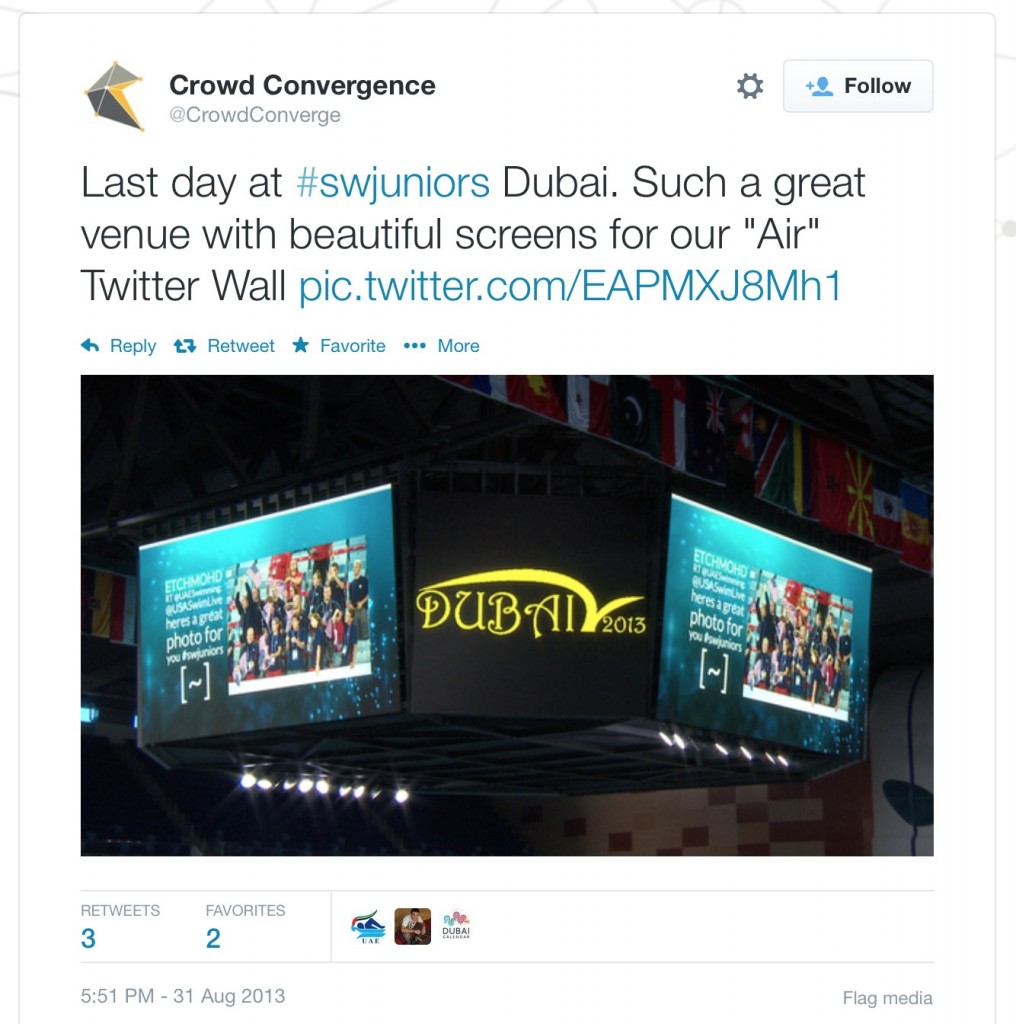I am a strong proponent of speculative design. The simple argument is that unshackling design from the usual constraints and social expectations gives designers the headroom to create the unusual and unexpected, or to take a critical or even antagonistic position. For research, speculative experimentation can drive innovation and lead research in exciting new directions. When I create speculative work I do so without expectation of immediate practical or commercial application but I know that ideas and techniques developed during a speculative process inevitably find their way into more conventional works. A fine example of this is my collaboration with Crowd Convergence.

Crowd Convergence provide a social media moderation service which allows their customers to aggregate various streams and filter the results. It’s perfect for large-scale events like sporting matches where organisers want to broadcast social media updates on a big screen and need to curate the content (ie. block anything offensive). Having seen some of my Twitter experiments, Crowd Convergence contacted me about creating visualisers for their social media service. I was stoked to receive the invitation and somewhat surprised that my speculative work had found such a directly relevant application.
“AIR”, the first of the Crowd Convergence pieces, extended techniques from one of my earlier experiments to create a 3D motion graphics sequence. After displaying a status post, the view zooms through a cloud of status updates, twisting and turning to arrive at the next post in the stream. Below, AIR in situ at London’s “Clothes Show Live” and at the FINA World Junior Swimming Championships in Dubai.


Photowall, as the name suggests, renders a social stream as a fullscreen tiled wall of photos, overlaying the screen name of the author and any associated status text.

Both of these works make extensive use of CSS 3D transforms; AIR for its rendering of 3D space, and Photowall for the transitions of each image tile. As I’ve stated previously (here and here), the evolution of CSS is a brilliant example of the changing practice of graphic design. Concepts and techniques derived from print design are being redefined and extended to address the transient qualities of the computer screen. It’s an active area that is evolving quickly.
Another aspect of the project that is worth noting is the format of the works. While they behave like fullscreen desktop software, they are in fact standard web applications utilising html, css and javascript, and running in a browser window. As someone who has dabbled with all sorts of IDEs and programming languages, it’s marvellous what can today be achieved within the context of the humble browser.
Crowd Convergence case study video of their work at the 2014 World Mobile Congress in Barcelona. Features glimpses of my AIR and Photowall visualisers, and also shows some interaction with the moderation console.
Another novel aspect of the works is their autonomy – unlike typical web interfaces the Crowd Convergence pieces operate without typical user interaction. Instead of waiting for clicks or text input the pieces poll the Crowd Convergence server and retrieve data containing the content to display and the instructions for its playback. So, while not interactive in the typical sense (buttons, hyperlinks, text input etc.), these autonomous works can be controlled to some extent through Crowd Convergence’s moderation console; stop, start, duration of transition, duration of hold, ordering of status posts, as well as customising features such as colours, typefaces, etc.
Of course, an important consequence of their autonomy is that the works need enough smarts to cope with variation or disruption. It’s definitely the more time-consuming aspect of production – testing for “what-ifs” and edge cases.
I think there is massive potential for autonomously visualising networked data and information – you only have to note the sheer quantity and scale of the public screens you encounter on a daily basis. The norm for many of these large public screens is to serve as billboards, displaying a queue of static posters, but there is no reason they can’t be used in more dynamic and interactive ways.
The Crowd Convergence collaboration is just one example of my recent forays into autonomous forms of visualisation. It is an area that is ripe for innovation, and one that I am continuing to explore.